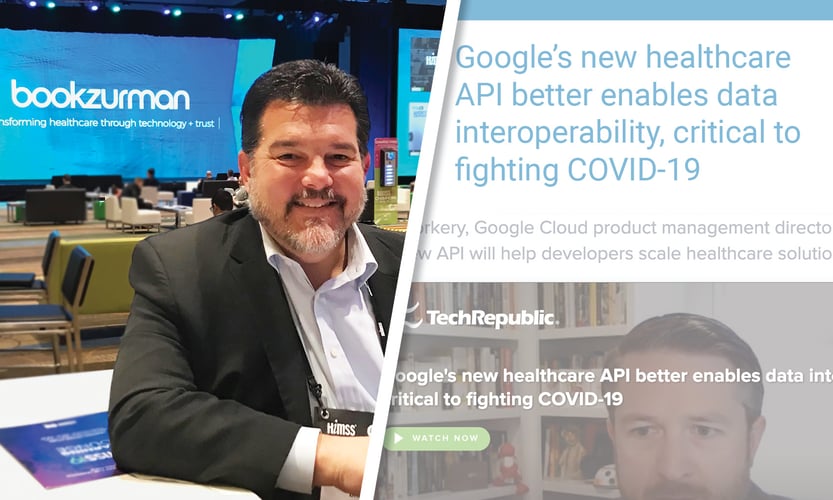The Power of Healthcare IT Standards in Data Management


Healthcare IT Standards refer to a set of guidelines and protocols that govern the way data is managed and exchanged within the healthcare industry. These standards ensure consistency, interoperability, and compatibility across different healthcare systems and technologies. By adopting and adhering to these standards, healthcare organizations can streamline their data management processes and improve overall operational efficiency.
The Role of Data Management Standards in Healthcare
One of the key aspects of understanding healthcare IT standards is recognizing the importance of data standardization. Standardizing data formats, terminology, and coding systems allows for seamless data exchange and interoperability between different healthcare entities. This means that healthcare professionals can easily access and share patient information across various systems, leading to better coordination of care and improved patient outcomes.
In addition, data management standards promote data security and privacy. They establish best practices for data protection, encryption, and access control, safeguarding sensitive patient information from unauthorized access or breaches. By adhering to these standards, healthcare organizations can mitigate the risk of data breaches and instill trust and confidence among patients, knowing that their data is being handled securely and responsibly.
Enhancing Efficiency in Data Management
Healthcare IT Standards are essential for enhancing efficiency in data management. They establish standardized processes and practices that help streamline data collection, storage, and retrieval, often eliminating the need for manual data entry and reducing the occurrences of errors and inconsistencies created by human error when entering data manually.
Additionally, healthcare IT standards enable the integration of different data sources such as electronic health records (EHRs), medical devices, and administrative systems. This integration allows healthcare professionals to access comprehensive and up-to-date patient information, leading to more accurate diagnoses and treatment plans. It also eliminates the need for redundant data entry, reducing the time spent searching for relevant patient information, and improving overall workflow efficiency.
By adhering to healthcare IT standards, medical facilities can streamline processes that are typically time-consuming, such as billing and claims processing. When these processes are automated, it reduces the administrative burden on healthcare organizations, minimizes errors, and ultimately improves revenue cycle management. This, in turn, allows healthcare professionals to allocate their precious time and resources towards providing high-quality patient care.
Ensuring Accuracy in Data Reporting
Accurate data reporting plays a vital role in healthcare organizations to enable informed decision-making while providing quality care to patients. Healthcare IT Standards are crucial in ensuring data accuracy by defining data collection methods, data elements, and validation processes. Implementing these processes ensures that data is consistently and accurately captured across different systems and settings, providing a solid foundation for reliable decision-making and enhanced patient care.
Clinical Decision Support Systems (CDSS) and Clinical Quality Measures (CQMs) are two such standards that healthcare professionals use to make informed decisions at the point of care. CDSS provides evidence-based guidelines and recommendations, while CQMs measure the quality of healthcare services and outcomes. These standards help organizations identify areas for improvement and implement targeted interventions to enhance the quality of healthcare services.
Maintaining accurate data reporting is important for healthcare organizations to generate reliable performance metrics, measure outcomes, and identify trends and patterns. This allows them to effectively monitor and improve the quality of care provided, which ultimately leads to better patient outcomes and enhances the overall performance of the healthcare system.
Improving Compliance with Healthcare IT Standards
Ensuring compliance with healthcare IT standards is of utmost importance for healthcare organizations to avoid potential penalties, maintain data integrity, and ensure interoperability. Regulatory bodies and industry associations often mandate these standards to establish a consistent and secure exchange of healthcare information.
By adhering to healthcare IT standards, organizations can ensure compliance with regulations such as the Health Insurance Portability and Accountability Act (HIPAA) and the Electronic Health Record (EHR) Incentive Programs. This helps safeguard patient privacy and security. It also qualifies organizations for financial incentives while avoiding legal consequences.
Promoting the seamless exchange of data and interoperability between different healthcare systems and providers requires adherence to these standards. This, in turn, facilitates effective care coordination, reduces medical errors, and enhances overall patient safety. What's more, it promotes the sharing of health information between healthcare organizations, providing a more comprehensive view of a patient's medical history and ultimately improving healthcare delivery.
Promoting Seamless Data Integration and Sharing
Healthcare IT Standards promote seamless data integration and sharing by defining common data formats, messaging standards, and communication protocols. This allows different healthcare systems and technologies to exchange data seamlessly, regardless of the vendor or platform.
Through promoting data integration and sharing, healthcare IT standards enable healthcare professionals to access and exchange patient information in real-time. This facilitates better care coordination, reduces medical errors, and improves patient outcomes. For example, when a patient is transferred from one healthcare facility to another, the receiving facility can quickly access the patient's medical records and treatment history, allowing for continuity of care.
Additionally, seamless data integration and sharing also support population health management and public health surveillance. Healthcare organizations can aggregate and analyze data from various sources to identify health trends, monitor disease outbreaks, and implement targeted interventions to improve population health. This enables proactive healthcare initiatives and enhances public health response capabilities.
Ensuring Data Security and Privacy
The confidentiality of patient information is extremely important, which requires strict measures to ensure data security and privacy in the healthcare industry. The sensitivity of the information involved demands that all necessary precautions be taken to safeguard it.
These standards define security measures like access controls, encryption, and audit trails to protect patient information from unauthorized access and breaches. They also provide guidelines on data governance, risk management, and incident response, helping healthcare organizations establish robust security frameworks.
Healthcare IT Standards further address privacy concerns by defining consent management, data anonymization, and de-identification protocols. This ensures that patient data is used and disclosed in accordance with legal and ethical requirements, maintaining patient trust and confidentiality.
By ensuring data security and privacy, healthcare organizations can mitigate the risk of data breaches, protect patient information, and comply with regulatory requirements. This fosters patient confidence in the healthcare system and promotes the widespread adoption of healthcare IT solutions.
To learn more about the importance of healthcare IT standards and how they can benefit your healthcare facility, continue following our blog for in-depth insights and expert opinions.


